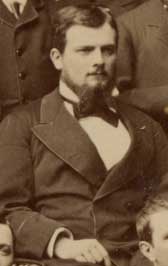August 20
Anniversary of Henri Babinski's
Death
 |
Henri Babinski was a French
mining engineer who was widely regarded as an expert in locating diamond,
gold, and coal deposits globally. His expertise in this profitable field
allowed him to indulge in his primary passion - food. As he travelled
through Europe, Africa, South America, and the United States, he studies
local culinary habits, food preparation techniques, and recipes of each
country. Henri began writing articles and cookbooks on international food under the nom de plume Ali Baba. His major work is Gastronomie pratique: Une bible gourmande en 5000 recettes (Practical Gastronomy: A gourmet bible in 5000 revenue.) which immediately earned him the reputation as one one of the world's leading food authorities and provided what is astill considered by many as the most accurate comprehensive approach to food and wines throughout the world that has ever been published. It was supplemented with a comprehensive collection of French recopies that rivals the Larousse Gastronomique.. When not traveling, Henri lived with his brother Joseph in Paris who was the internationally famous neurologist who discovered the Babinski reflex to detect neurological disease.. |
|
|
Henri Babinski |
|
|
||
Ingredients
|
||
| Instructions |
2. Warm vermouth slightly in a small saucepan. Do not let it come to a simmer. Sprinkle gelatin over heated vermouth and stir until
the gelatin dissolves. Remove from heat and stir in caviar-sour cream mixture. Refrigerate mixture for 30 minutes.
3. Whip cream. Fold into chilled caviar-sour cream mixture. Spoon into a 2-cup glass or earthenware mold. Refrigerate for 4 hours.
4. Turn out mold and surround with rye crackers as an appetizer.
|
*
The original recipe designates
sevruga caviar, a small-ground, sweeter caviar often preferred by the French.
Sevruga is the most |